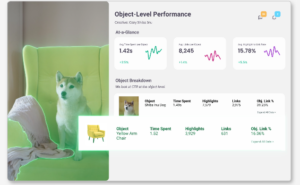Following last week’s, Winter Trinity Lunch event, we spoke to some of the event’s sponsors to ask why they agreed to get involved, and what their thoughts are on the current state of the industry. Here, NDA speaks to Simon Burgess, Director of Business Development at Blockthough, the adblock revenue recovery specialists…
Why did your organisation choose to sponsor the NDA Winter Trinity Lunch?
The media industry wouldn’t survive without the incredibly talented people who work within it, and after several years of disruption, isolation and upheaval, it’s so important to bring people together again to celebrate old friendships, spark new ones and create business opportunities to keep driving this dynamic industry forward.
Blockthrough is proud to sponsor the Winter Trinity Lunch to celebrate the successes of the past year and look forward to the new year ahead.
What are the big priorities for your organisation in the new year?
Blockthrough’s biggest priority in 2023 is to continue developing technologies that place the needs of users at the center of the Web experience, while also supporting the needs of publishers, advertisers, and others across the open Web ecosystem. Our mission is to enable publishers to restore a fair value exchange with their users, while simultaneously respecting their choice to block disruptive and noxious advertising experiences.
In 2023, we expect to see the biggest publishers in Europe continue to embrace Acceptable Ads, just as they have in the US and in Canada.
What are the biggest issues your clients/customers are facing right now?
Blockthrough’s publisher partners are facing many headwinds right now. From the existential crises of the pandemic and global recession, the ever-changing privacy landscape, to the consequences of cookie deprecation, it has arguably never been more challenging for publishers to generate a fair return from the content they produce for their users, for free.
With these factors in mind, it is no wonder that their hands are often forced to add even more ad units and intrusive formats onto their sites to grab users’ attention and provide their advertisers with some level of ROI. But at what cost?
In December 2021, the number of adblock users opted into Acceptable Ads passed the 225 million mark globally. Consumers are voting with their feet that they want a cleaner, less noxious user experience when using their favourite publishers’ websites. This is further confirmed by our 2022 Adblock Report, which found that 82% of adblock users prefer a lighter ad experience.
Blockthrough firmly believes that every user has the right to choose their online experience. At the same time, we also believe that publishers provide an essential service and should be fairly compensated for their efforts. Blockthrough’s real-time ad filtering technology is bridging this gap by enabling thousands of independent publishers to engage their adblock users with advertising that is compliant with the Acceptable Ads Standard, and therefore respectful, non-intrusive, and relevant.
Are your customers/partners testing ‘cookieless’ ad targeting and measurement solutions?
The future of ad targeting is still very unclear – when will Google put the final nail in the coffin of the third-party cookie? Will it ever happen? Will there be one ID to rule them all or, more likely, will publishers still need to work with multiple vendors, all with their own unique supply or niche?
As a tech layer for publishers to activate their adblock audiences, Blockthrough is currently working with customers to test cookieless ad targeting and measurement from multiple leading ID vendors, so that we’re prepared to maximise yield in the “cookieless” future.
Are there any other noteworthy trends in your marketplace right now?
Publishing is an ever-evolving landscape and while there are always buzzwords and three-letter acronyms flying around, there are some key themes that come up in most conversations with our customer-facing teams, most notably:
- The future of the open marketplace – should premium publishers be shutting it down a la Bloomberg? Will that drive up overall revenues?
- How do they drive maximum value from their audiences – should they be focussed on first-party data platforms, contextual ads, or a combination of both? Should they be investing in video? What alternative revenue streams should they be focussed on in 2023?
- How do “open web” publishers get a more fair share of ad budgets? What do they need to do to build stronger and more strategic partnerships with brands? How do they move advertisers from last-click attribution to measuring outcomes, such as attention?
As ever, there is no right answer. However, there is a wealth of very smart people in our industry working hard to help publishers on their journey.
From a personal perspective, is the advertising moving in the right direction?
In the time that I’ve worked in digital publishing, I’ve seen many developments, both good and bad.
Among the worst was the trend for publishers to treat users like numbers on a spreadsheet, rather than human beings with feelings, likes and dislikes. That culminated in some of the worst user experiences I have ever come across, with incredibly noxious ad experiences where you could barely even read the content you had come to their sites for. No wonder there was an explosion in adblocking – users didn’t have much choice.
Luckily, many premium publishers came to realise the folly of driving away users and paired back the ad units on page. Unfortunately, due to economic pressures, advertiser demands for performance, and many other headwinds resulted in publishers to continue producing a user experience that didn’t respect their consumers’ wishes.
My belief is that publishers can continue to monetise their audiences without resorting to pile ’em high tactics, and instead, provide them with an advertising experience that actually makes them want to keep coming back for more.









